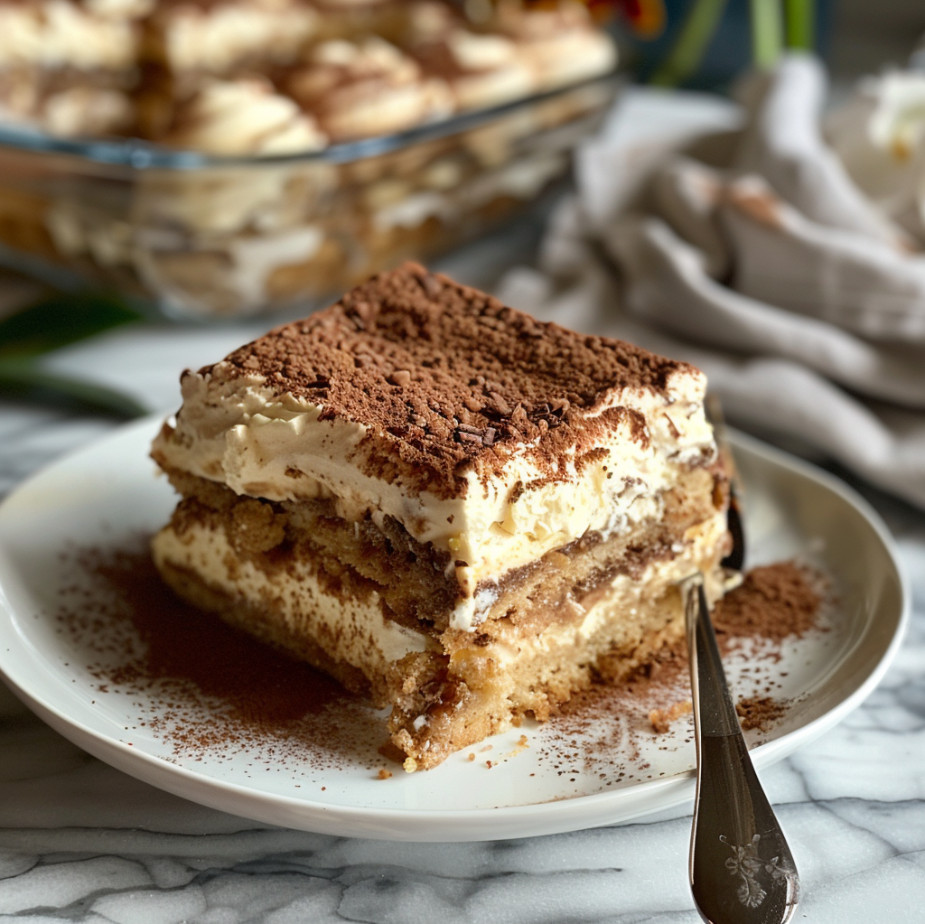Classic Italian Tiramisu is one of the most iconic Italian desserts, beloved for its luxurious layers of coffee-soaked ladyfingers, rich mascarpone cream, and a dusting of cocoa powder. Originating from the Veneto region of Italy, this dessert has captivated dessert lovers worldwide with its irresistible combination of flavors.
The History and Origins of Tiramisu
Tiramisu translates to “pick me up” in Italian, likely referring to the energizing combination of espresso and cocoa. The origins of this dessert are often traced back to the region of Treviso, where the first version was allegedly made at the restaurant Le Beccherie in the 1960s. Over the years, tiramisu has evolved, with modern interpretations featuring everything from alcoholic variations to healthier alternatives.
While the exact origins are still debated, it’s widely agreed that tiramisu was initially made without alcohol, focusing on simple, fresh ingredients such as mascarpone, espresso, and ladyfingers. The importance of high-quality mascarpone cannot be overstated—its rich, creamy texture is what makes the dessert so luxurious.
Essential Ingredients for Classic Italian Tiramisu
To create an authentic Italian tiramisu, you’ll need the following ingredients:
- Ladyfingers (savoiardi) – Crisp Italian biscuits that form the foundation of the dessert.
- Mascarpone cheese – A rich, creamy cheese essential for the filling.
- Espresso – Strong brewed coffee to soak the ladyfingers.
- Egg yolks and sugar – Whipped together to create the base for the mascarpone mixture.
- Cocoa powder – Lightly dusted on top to finish the dessert with a touch of bitterness.
The delicate balance between the sweetness of mascarpone and the slight bitterness of espresso and cocoa powder is what makes tiramisu so unique.
How to Make Classic Italian Tiramisu
Making tiramisu at home is surprisingly simple, as long as you follow these key steps:
- Prepare the espresso and let it cool.
- Whip the egg yolks and sugar until thick and pale, then gently fold in the mascarpone.
- Whisk egg whites separately until stiff peaks form, then fold them into the mascarpone mixture for a light, airy texture.
- Dip ladyfingers briefly into the espresso, ensuring they are soaked but not soggy.
- Layer the soaked ladyfingers in a dish, then spread half of the mascarpone mixture on top.
- Repeat with another layer of ladyfingers and mascarpone cream.
- Chill in the fridge for at least 6 hours, preferably overnight, to allow the flavors to meld.
Popular Tiramisu Variations
While the classic version remains a favorite, there are countless ways to customize tiramisu. Here are a few popular variations:
- Incorporating dark chocolate shavings between layers for added richness.
- Creating individual servings in glass cups for a modern presentation.
These variations allow for endless creativity while staying true to the essence of tiramisu.

Tips for Serving and Storing Tiramisu
Tiramisu should be refrigerated for at least 6 hours, but overnight chilling is even better to achieve the perfect texture. When serving, you can dust a bit more cocoa powder on top just before slicing to ensure it remains dry and flavorful. For gatherings, preparing tiramisu the day before makes it an ideal make-ahead dessert.
- Serving suggestion: Use a spatula to serve neat rectangular slices or present them in elegant individual glasses.
Common Mistakes to Avoid
Even though tiramisu is straightforward to make, a few mistakes can impact the final product:
- Oversoaking the ladyfingers can make the dessert too soggy. Dip each biscuit briefly into the espresso to retain its structure.
- Not beating the egg whites enough can result in a dense filling. Make sure they reach stiff peaks before folding them in.
- Skipping refrigeration—Tiramisu needs time to set properly in the fridge, allowing the flavors to develop.
FAQs About Italian Tiramisu
Is Tiramisu Always Made with Alcohol?
No, traditional tiramisu was made without alcohol, although many modern recipes include liqueurs like rum or marsala.
Can You Make Tiramisu Without Mascarpone?
While mascarpone is a key ingredient, some variations use cream cheese as a substitute. However, it won’t have the same authentic flavor.
What Coffee Should I Use for Tiramisu?
Use strong espresso or even decaf espresso if you prefer a less intense caffeine kick.
By following these steps and tips, you’ll be able to recreate an authentic Italian tiramisu at home. Whether you stick to the classic recipe or experiment with modern variations, this dessert is sure to impress with its rich, creamy layers and bold coffee flavor.

